MVRDV-led team chosen to design new urban lagoon in Taiwan
By Bustler Editors|
Tuesday, Nov 17, 2015
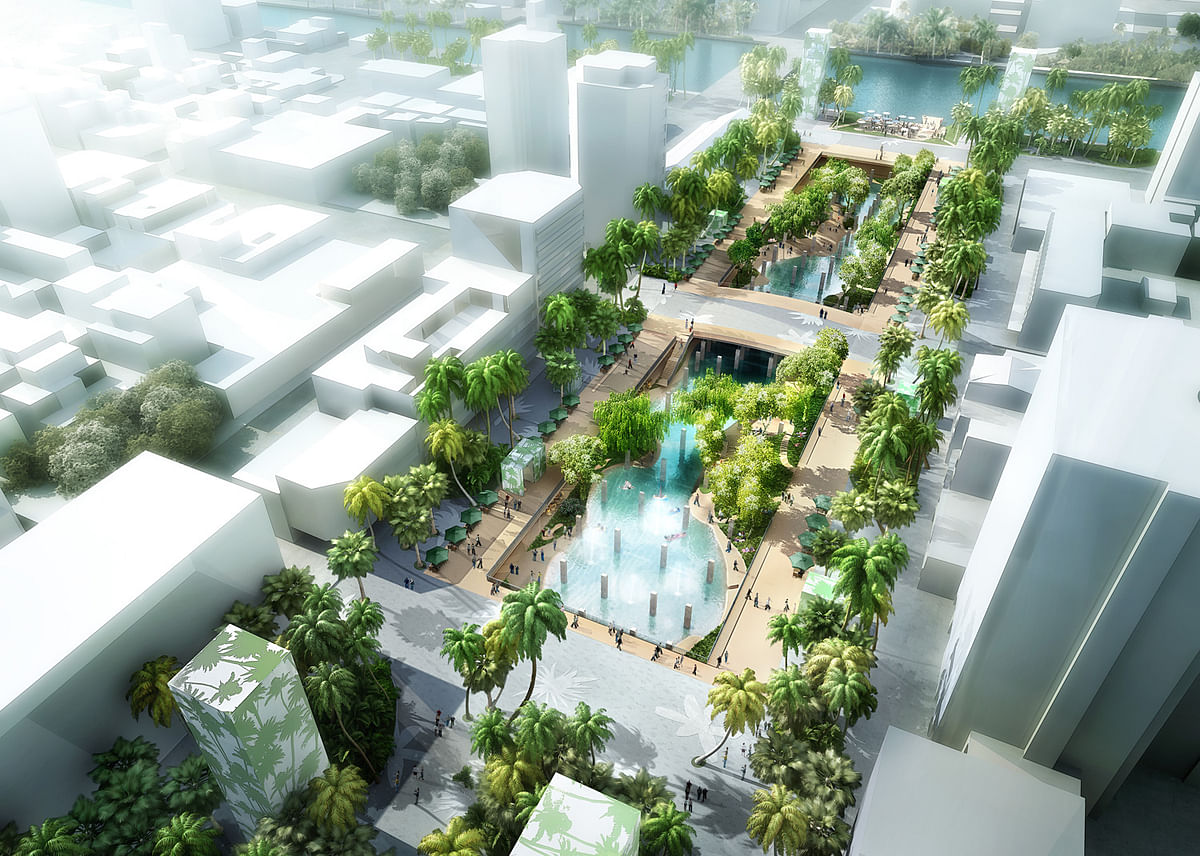
Related
A team led by MVRDV recently won the commission to design a new "urban lagoon" in downtown Tainan, Taiwan to ultimately re-connect the city to its waterfront.
The tourist-friendly project will revamp the "T-axis" part of downtown and replace the old China-Town Mall from 1983, which MVRDV amusingly described was turning into a "rotten tooth" for the area. Some features in the new lagoon include a public square and a lush green promenade with tourist-friendly attractions like a teahouse, a gallery, and kiosks selling souvenirs.
Construction is scheduled to begin in fall 2016.
Read on for more details.
"Tainan’s natural lagoons and water network served as the city’s base for its marine and fishing industry up until the early 20th century. Land reclamation and a new urban plan devised under Japanese governance saw the city expand rapidly; construction of the New Tainan Canal and Tainan Ship Moorage moved the shipping and fishing industry further inland which saw a lively neighbourhood of auction and trade markets flourish around it. China-Town Mall was built next to the canal in 1983. A large commercial structure of little architectural quality, it disconnected the city from its waterfront and soon fell into decline, becoming like the rotten tooth of downtown Tainan."

"Our proposal is inherently simple in its concept. We propose a terminal that comprises a hard well defined outer shell, formed to protect, and within it a soft inner surface that is malleable and dynamic to celebrate and form the ever changing spaces below. Adjust both the nature of spaces whether grand, intimate, uniform or dramatic and the extent of those spaces too. This flexibility ensures the airport is always at its best and suitably presented as the principal gateway to and from Taiwan to the rest of the world."
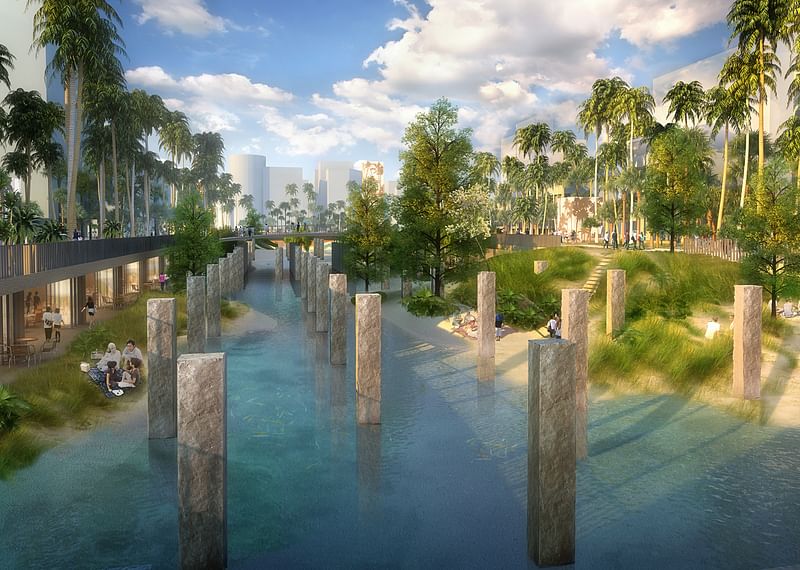
"The transformation of China-Town Mall and its perpendicular axis Haian Road, which together form the T-axis, aims to re-establish the waterfront connection and provide an important stimulus to the redevelopment of the neighbourhood by encouraging the use of public spaces and creating a cohesive urban language. Once dismantled, the exposed structure of China-Town Mall will form the base for the new public square, a lush, green lagoon with dunes and playgrounds flanked by small commercial units such as kiosks selling souvenirs, a tourism info point, a teahouse and a gallery."
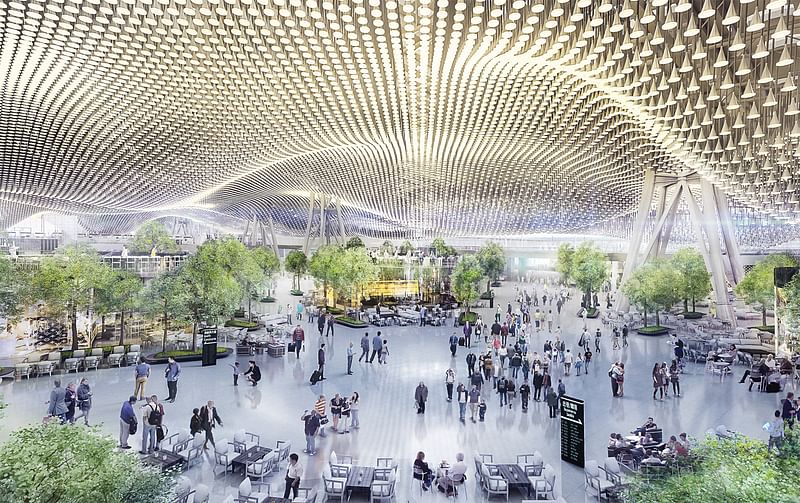
"First of the Next Generation of Airport Terminals:
Our proposal for Taoyuan T3 will be the first of a new generation that will respond directly to the passenger, making the process of using an airport less forbidding. If selected, this unique proposal will become a benchmark for the future, admired and copied around the world.
- Passenger focused
- Unique durable idea
- 'Hard shell, soft core'
- Super clear, quick and easy to use
- Catalyst to improve the whole airport and respect its heritage
- A city address for the MFB"
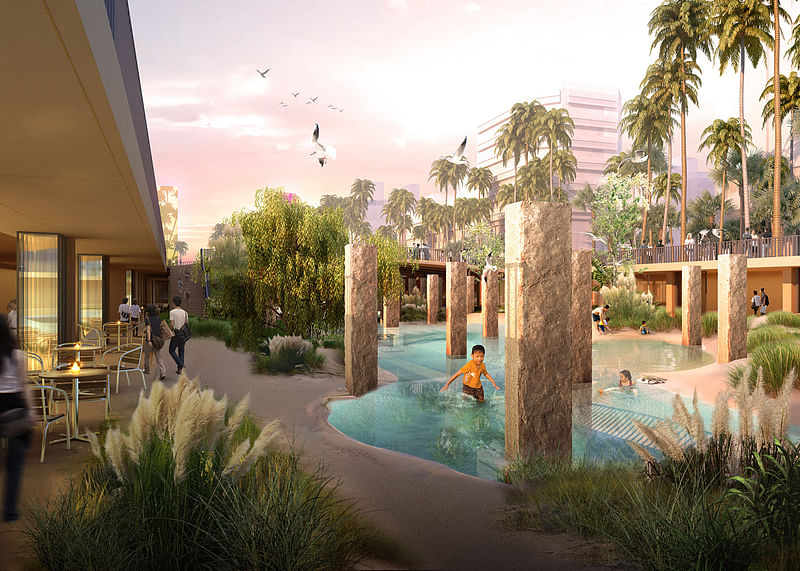
"New transport nodes further east of the city center will allow Haian Road to be relieved from its current flow of traffic offering the opportunity to develop the area as a lively public zone with improved spaces and activities. A reconfigured routing system aims to reduce the traffic speed, and a complete closure at nighttime allows for pedestrians and small businesses to spill out onto the road, turning it into a lively hub for both locals and tourists."
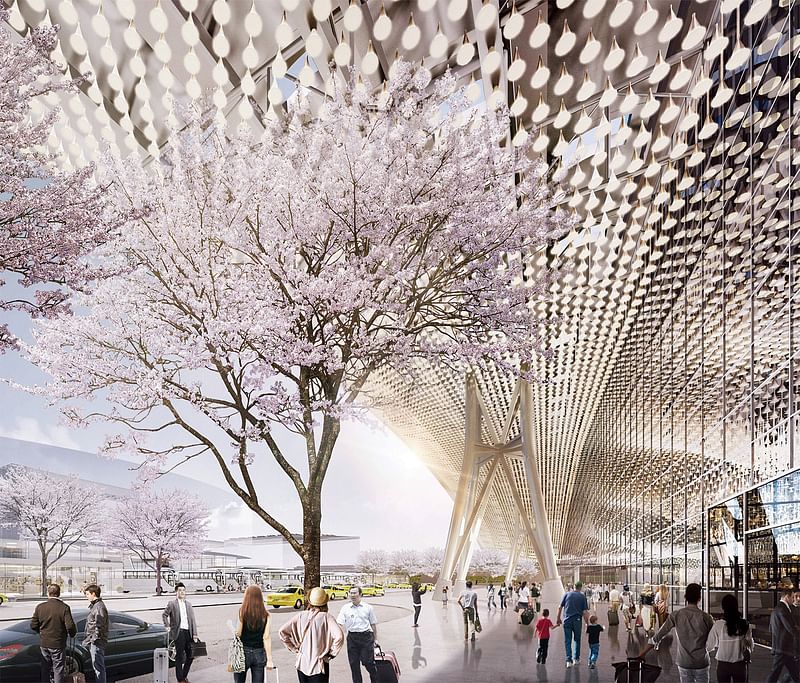
"The petals following the line of the hard exterior shell. The petals are designed to respond to the senses, visually and aurally. They are all identical, they are each the height of a person with upstretched arm and arranged on a consistent grid. They each comprise a brightly finished tube and cone which give them depth when seen obliquely and to reflect light from the skylights above. The lower surface of each has a warm reflective finish and is perforated which, with acoustic absorption within, controls sound absorption in the spaces. Each petal is suspended and tied to its neighbours with theatre wire to prevent excessive movement in earthquakes.
During the daytime, when the natural light is sufficient, sunlight is encouraged to penetrate and be refracted by the petals. The petals can be artificially lit from above with daylight balanced circadian lighting. Each petal has a small LED fitting, which can be controlled to highlight its warm underside. We imagine these could be programmed for many functions from forming large pixelated images, to adding colour for festivals and even to respond to the flow of passengers moving through the spaces below."
SECOND PRIZE: UNStudio + April Yang Design Studio Limited + MAA Group Consulting Engineers

"The current amalgamation of different pavements will be unified according to various functions to improve wayfinding. This approach is further applied to the scattered objects along the road: ventilation shafts, elevators and entrances to the underground parking garage will be wrapped in a glass skin, and extended to create new pavilions, kiosks and viewing towers. An array of ‘lanterns’ of various sizes will appear, activating the public space and creating a cohesive urban language. Additionally, local trees and shrubs will be planted all along Haian Road, creating a green corridor through to the new lagoon and the reconnected waterfront."

"Place making at urban scale: The new Terminal 3 for Taoyuan airport is the new gateway for the Aerotropolis. With strong connections to Taipei through the MRT and vehicular traffic, the new Terminal 3 fosters strong connections to the new development area. Creating a closer proximity of terminal 3 to terminal 2 gives significant advantages when considering the terminals of Taoyuan Airport as an operational “hub” rather than segregated terminals. The main entrance of terminal 3 will become the most visually prominent facade for the Taoyuan Airport. As one arrives to T3, the roof transitions in a smoothly up-lifting opening up gesture designed to guide people at the curbside to the various entrances. This welcoming gesture is reinforced by the high level of transparency of the glass facades, enhancing the fluid connection between public spaces inside and out. Externally, the canopy reaches over the roadways to provide protection. The experience of the journey starts outside the terminal building!"

"'This flooded old mall is going to be a poetic lagoon and an hip urban pool: a symbolic act,' stated Winy Maas of MVRDV. The connection with the waterfront will be completed by a green promenade and an artificial beach along the canal so as to celebrate the re-established view to the sea and the removal of the shopping mall which previously obscured it."
Project credits:
Winy Maas, Jacob van Rijs and Nathalie de Vries with Jeroen Zuidgeest, Hui-Hsin Liao, Ángel Sánchez Navarro, Stephan Boon
Images: Aplus Digital Technology Co., Ltd
Partners:
Urban Planners: The Urbanists Collaborative, Taipei, Taiwan
Local Architect: LLJ Architects, Taipei, Taiwan
Landscape Designers: Progressive Environmental Inc., Taipei Taiwan
Structure Design: Urban Sculptor, Taipei, Taiwan
Traffic Engineers: THI Consultants Inc., Taipei, Taiwan
MEP: Songsing Engineering Consultants Inc., Taipei, Taiwan
All images courtesy of MVRDV.
Check out more MVRDV projects on Bustler.
More images in the thumbnail gallery.
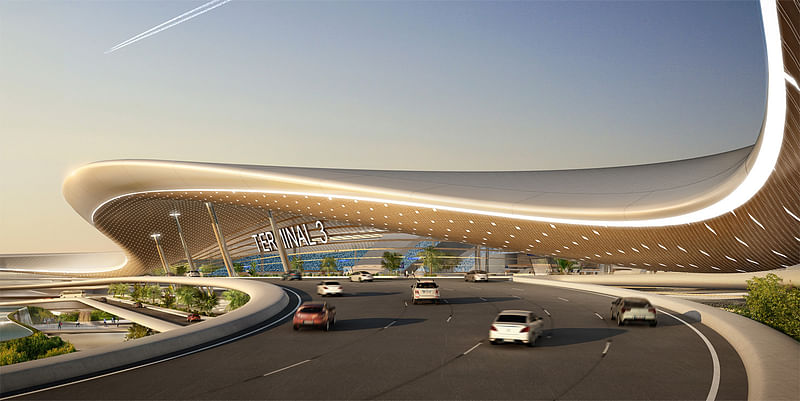
"Place making at building scale: In Terminal 3 we are building an environment: to create an architecture that is responsive to all environmental constraints, creating localised micro-climatic zones internally, and an outer and inner shell that work in concert with one another to ensure the optimum performance of all spaces. The building design is of integral nature. It benefits from a clear organization that provides passengers with high efficiency, while satisfying the need for physical convenience and comforts. The terminal building is characterized by short walking distances, minimal level changes and natural way-find ing through refined execution of orientation and daylight principles.
At the large scale, the architecture itself forms guiding elements – expressed prominently in the vertical structure connecting the MRT with arrival and departure levels, and the visual voids between departure and arrival levels. These important experiential moments and the building as a whole, is based on a rational and efficient grid system (9m base grid) that further differentiates the larger zones. Furthermore, prefabrication off site and assembly on site, efficient use of construction material and building load, all contribute to an effective implementation of the overall design strategy."

"Place making at interior scale: Our vision is to create an extended experience for the various users. The design speaks of ‘place making’ through the creation of a sequence of spaces that privilege comfort, ease of use and orientation. The cumulative effect of this is a pleasant environment that communicates our best wishes to the visitors. Natural wayfinding is an overarching principle for the internal organization of the spaces, supported by traditional way finding at key-locations. The different micro-climates are defined by physical conditions related to daylight, humidity, temperature and airflow corresponding to the predominant use of such zones. Localized uses are interchangeable and can include retail, recreation, relaxation, food & beverage, play and work; whereas the plants, media, art and Taiwanese culture constitute the integral components of these different zones. It is through this attentiveness across all scales that the project achieves a holistic design approach. The strategy of placemaking achieves the dual effect of appealing foremost to the end users - the people, and consequentially - to the various stakeholders in and around the airport business."

Our team has deliberately chosen to take the ‘unknown’ path. From the project inception, we have sought to conflate the spatial and functi onal experience of passengers. We have looked for an organizational model generated by principles of natural way-finding; creating an interior ecology that is entirely distinct from the look and feel of comparable airports. Through careful analysis of suc precedents, our design approach has sought to build upon and improve the organizational models of airport efficiency. Through this process, we have come to understand that the design for Terminal 3 is not just a building, but a project latent with potential for considering the Taoyuan airport as a hub. This attitude encompasses a desire to see all systems well integrated and aligned with each other, which will in turn allow the design for T3 to be perceived with increased significance - as it will be understood as a catalyst for the transformation of Taoyuan Airport."
THIRD PRIZE: Foster + Partners and Ricky Liu & Associates Architects+Planners
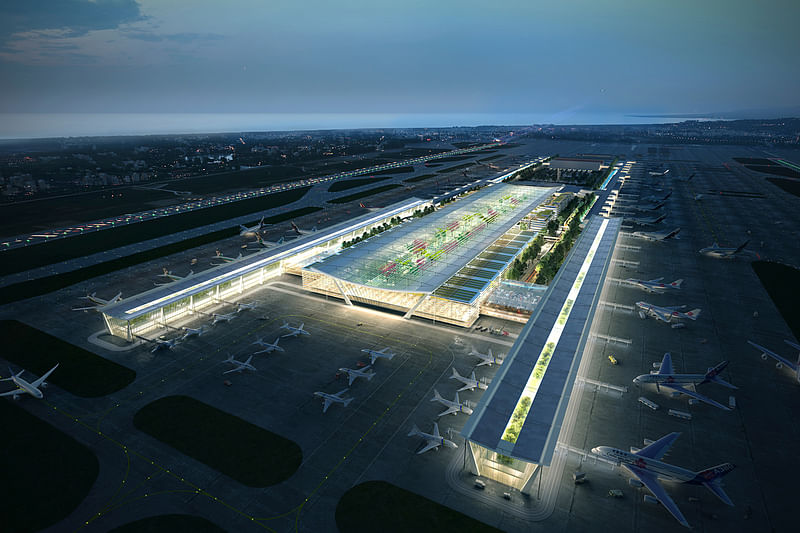
"Taiwan’s rich history and culture, and unique climatic conditions have all influenced the design of the terminal and the airport city. The awe inspiring and undulating backdrop of the Zhongyang Mountains, the majestic flight of the Taiwanese magpie together with traditional Taiwanese architectural forms all have inspired us for the iconic and distinctive sweeping wing roof form that will become a recognisable symbol and icon for the international gateway of Taiwan."

"The rich landscape of Taiwan with its magnificent central mountain range, diverse flora and fauna are celebrated in our concept design. A lush green garden spine is incorporated throughout with abundant indigenous plant species showcasing the variety of Taiwanese plantlife. This garden spine, arranged along the central axis intuitively guides passengers through check-in, security, immigration and departures."
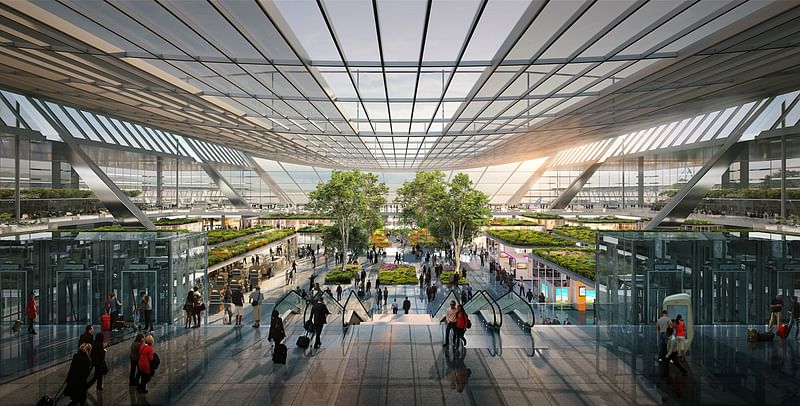
"It also creates unique, calm and relaxing spaces, the lush vegetation providing a welcome contrast to the harder finishes in the terminal. This reduces anxiety and stress normally associated with air travel, allowing passengers and visitors to connect with more natural and familiar surroundings. The choice of planting will represent the various places throughout Taiwan, informing and educating visitors the beautiful range of the indigenous landscape. The green garden spine will cover over 30,000sqm making it the greenest and the most exceptional airport in the world."

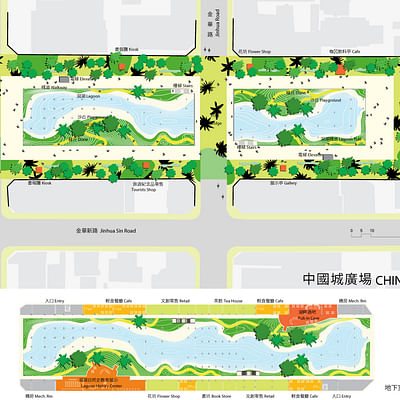
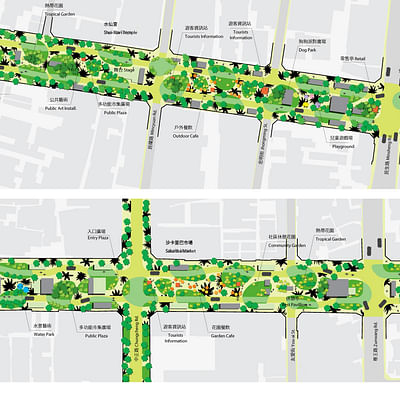
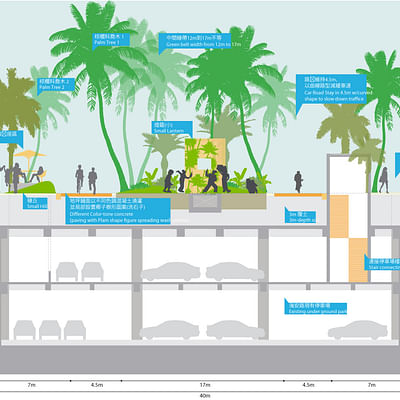
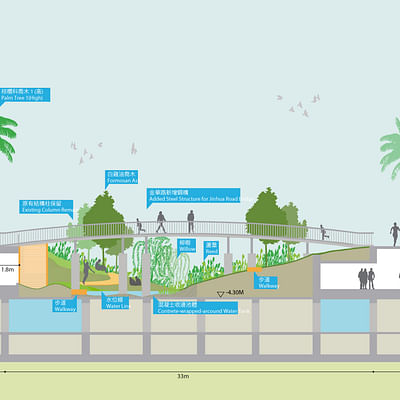
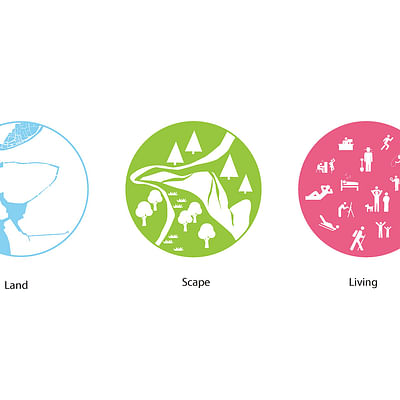



Share
0 Comments
Comment as :